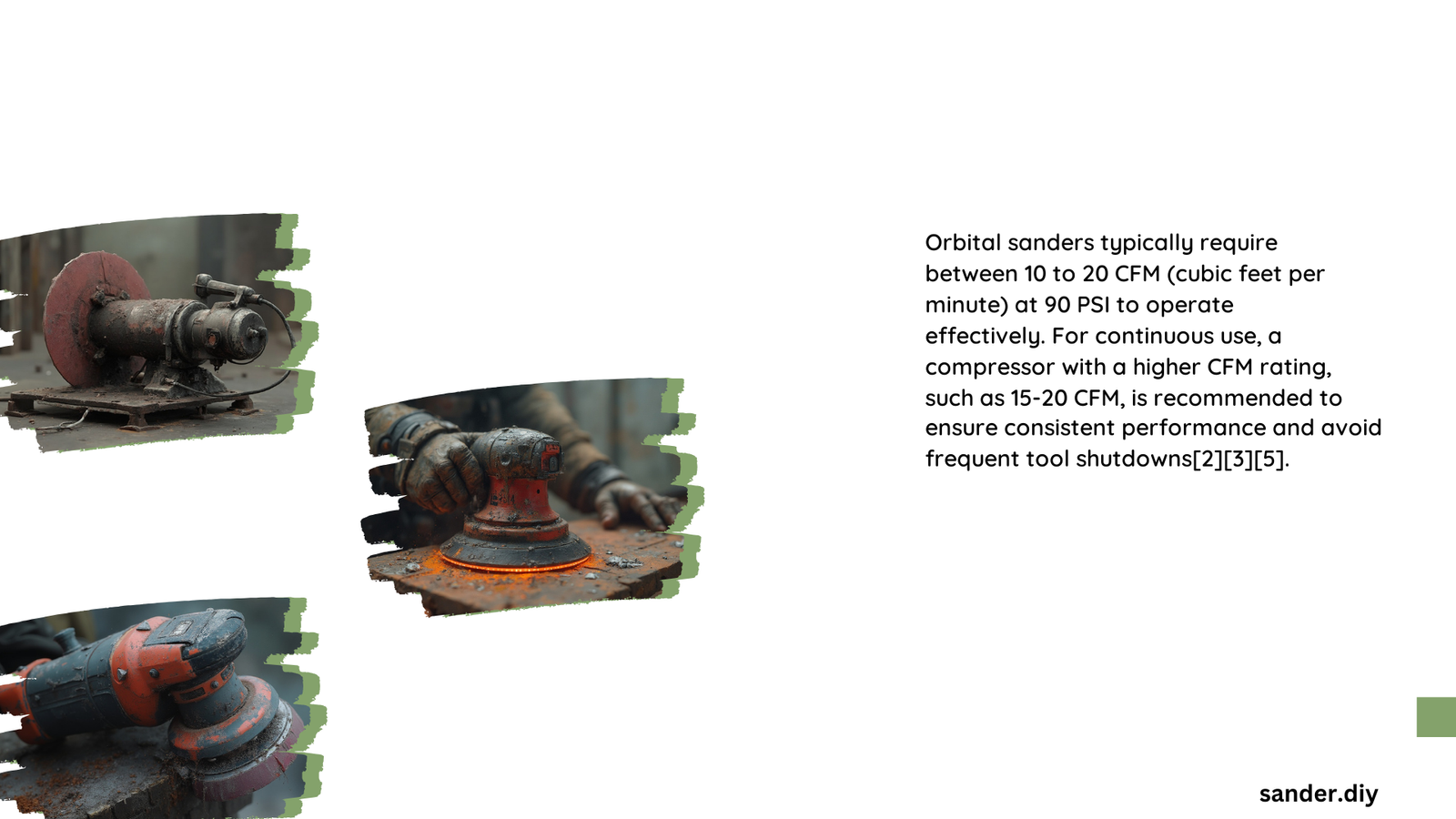Understanding orbital sander CFM requirements is crucial for woodworkers and professionals seeking optimal tool performance. Air compressor specifications directly impact sander efficiency, with most pneumatic orbital sanders demanding between 6-9 CFM at 90 PSI for continuous operation, ensuring smooth sanding and preventing equipment strain.\n\n## What Are Orbital Sander CFM Requirements?\n\nOrbital sander CFM (Cubic Feet per Minute) requirements represent the precise airflow needed for consistent and effective tool performance. Different models and manufacturers specify unique air consumption rates that directly influence sanding quality and equipment longevity.\n\n### Key Factors Determining CFM Needs\n\n| Sander Type | Typical CFM Range | Pressure (PSI) | Performance Impact |\n|————|——————|—————|——————-|\n| Pneumatic Orbital Sanders | 6-9 CFM | 90 PSI | High Efficiency |\n| Dynabrade Models | 2 CFM/14 SCFM | 90 PSIG | Consistent Operation |\n| Heavy-Duty Sanders | 15+ CFM | 90-100 PSI | Continuous Use |\n\n## How Do Compressor Specifications Affect Sander Performance?\n\nCompressor capabilities significantly influence orbital sander functionality. Key considerations include:\n\n- Continuous Demand: Compressors must handle sustained air tool requirements\n- Duty Cycle: Recommended compressor CFM rating should exceed tool requirements by 1.5x\n- Ambient Conditions: Temperature and humidity impact air tool performance\n\n### Recommended Compressor Strategies\n\n1. Calculate total CFM for multiple tools\n2. Choose compressors with 25-50% additional capacity\n3. Consider pressure drop in air lines\n4. Maintain clean air filters\n\n## What Happens with Insufficient CFM?\n\nInsufficient air supply can lead to multiple performance issues:\n\n- Reduced sanding efficiency\n- Intermittent tool operation\n- Potential motor damage\n- Increased wear on pneumatic components\n\n## Practical Recommendations for Optimal CFM Management\n\nWoodworkers and professionals should:\n\n- Verify specific sander model CFM requirements\n- Invest in high-quality air compressors\n- Regularly maintain compression equipment\n- Use appropriate air hoses and connectors\n- Monitor system pressure consistently\n\n## Technical Specifications for Popular Orbital Sanders\n\n### Dynabrade Orbital Sanders\n- CFM: 2 CFM/14 SCFM (396 LPM)\n- Pressure: 90 PSIG (6.2 Bars)\n- Models: Dynorbital-Spirit™, Dynorbital Supreme\n\n### Ingersoll Rand Orbital Sanders\n- CFM: 6-9 CFM recommended\n- Pressure: 90 PSI\n- Features: Vacuum-ready dust collection\n\n## Advanced Considerations\n\nProfessional-grade orbital sanders require precise air management. Factors like:\n- Sandpaper grit\n- Sanding surface\n- Continuous vs. intermittent use\n\nAll influence overall CFM requirements and tool performance.\n\n## Conclusion\n\nMastering orbital sander CFM requirements ensures optimal tool performance, extends equipment lifespan, and delivers superior sanding results across various applications.\n\n### Reference:\n- Dynabrade Specifications\n- Compressor Guide\n- Woodworking Forum

